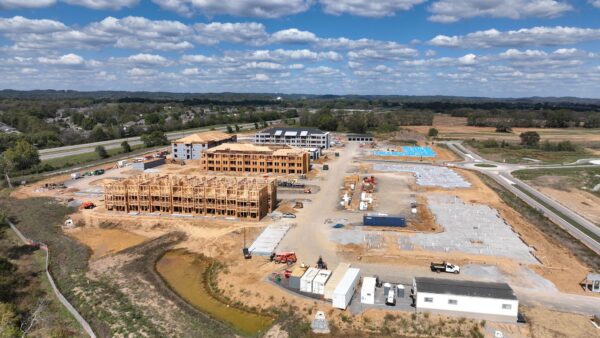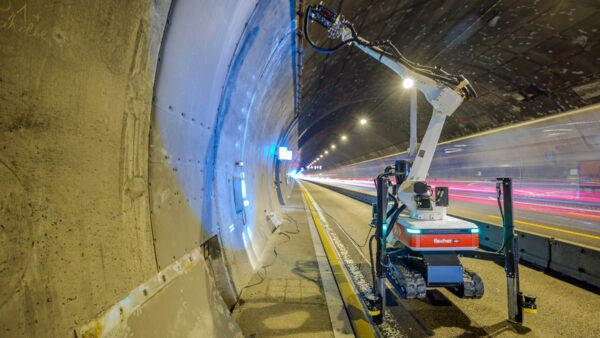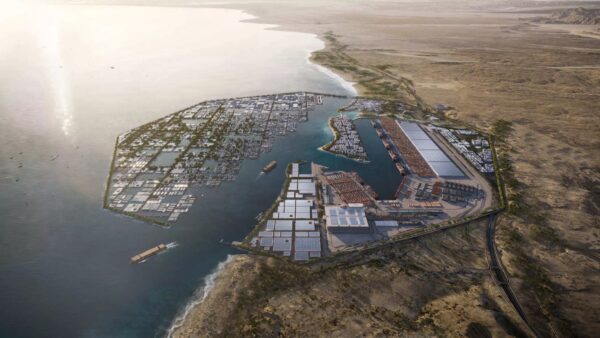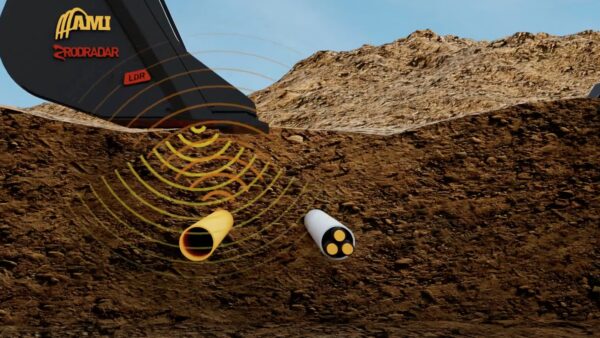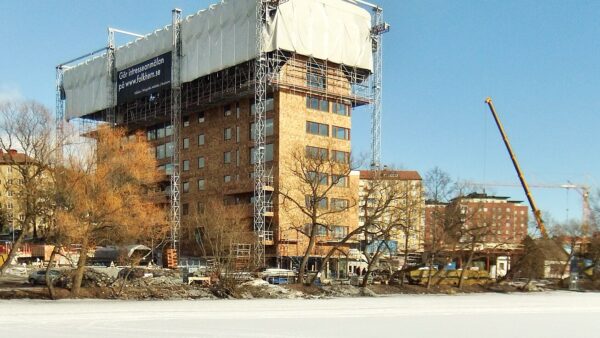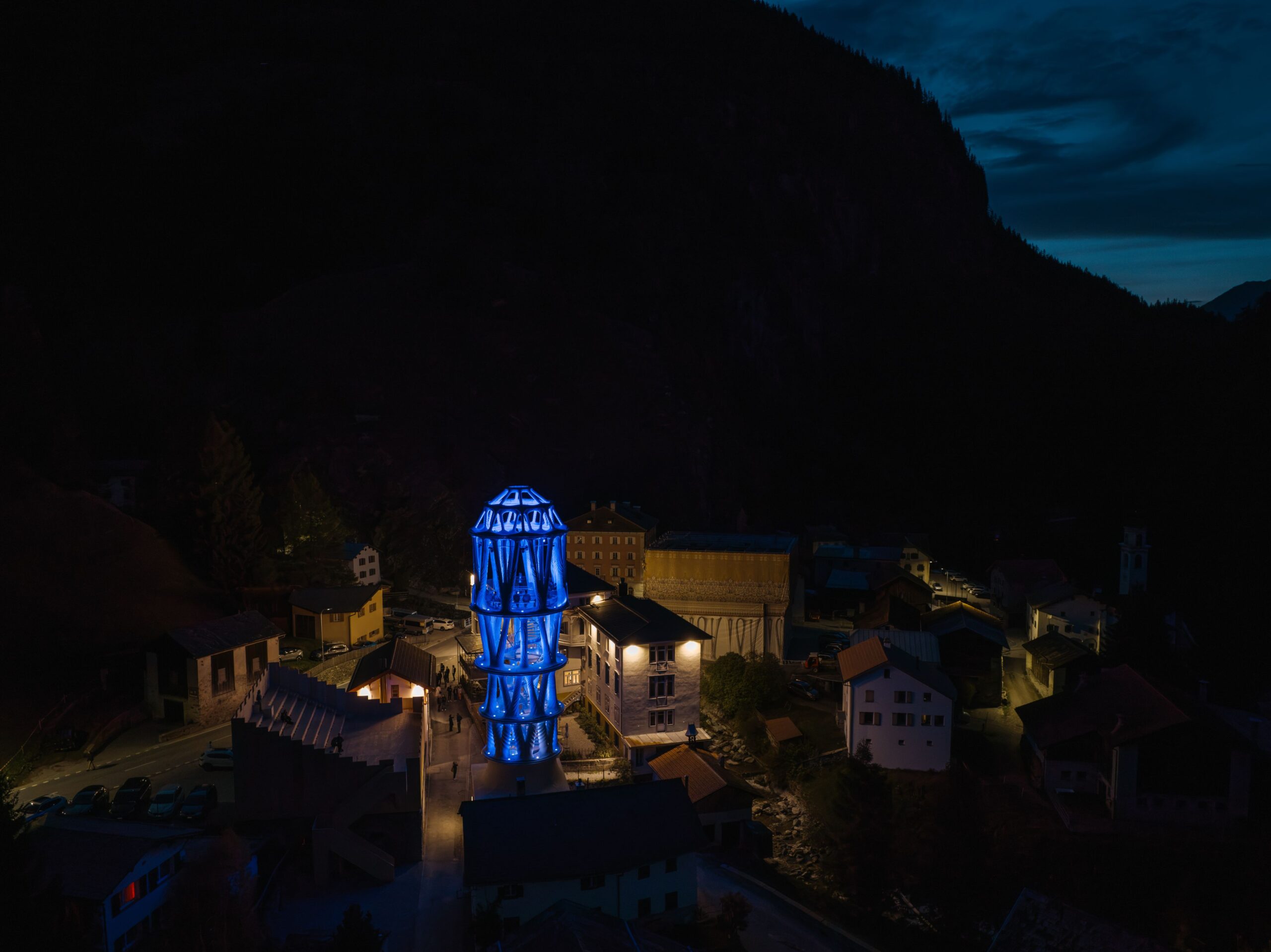
What’s claimed to be the world’s tallest printed structure was unveiled this week in the southeastern Swiss mountain village of Mulegns.
The 30m-tall “Tor Alva” – which means “White Tower” in the local Romansh language – is an initiative by Swiss university ETH Zürich and the Origen cultural foundation to test printing techniques and to support Mulegns, which has only 11 residents left.
It consists of 32 white, printed concrete columns that taper before fanning out in a domed crown.
It was designed by architect Michael Hansmeyer and ETH Zürich Professor of Digital Building Technologies, Benjamin Dillenburger.
Their use of generative algorithmic methods let two industrial robots print the components without casting moulds.
- Watch Tor Alva being assembled, courtesy of Digital Building Technologies and ETH Zürich:
The two robots worked together, the first applying a layer of concrete and the second adding a ring-shaped reinforcement every 20 centimetres. This allows the elements to act as a shell and to bear loads.
The novel concrete mixture included two ingredients added just before it left the pressurised nozzle, creating a droplet-like relief on the columns.
The tower took five months to print at the university’s Hönggerberg campus.
The components were assembled in the nearby village of Savognin and then delivered to Mulegns for assembly.
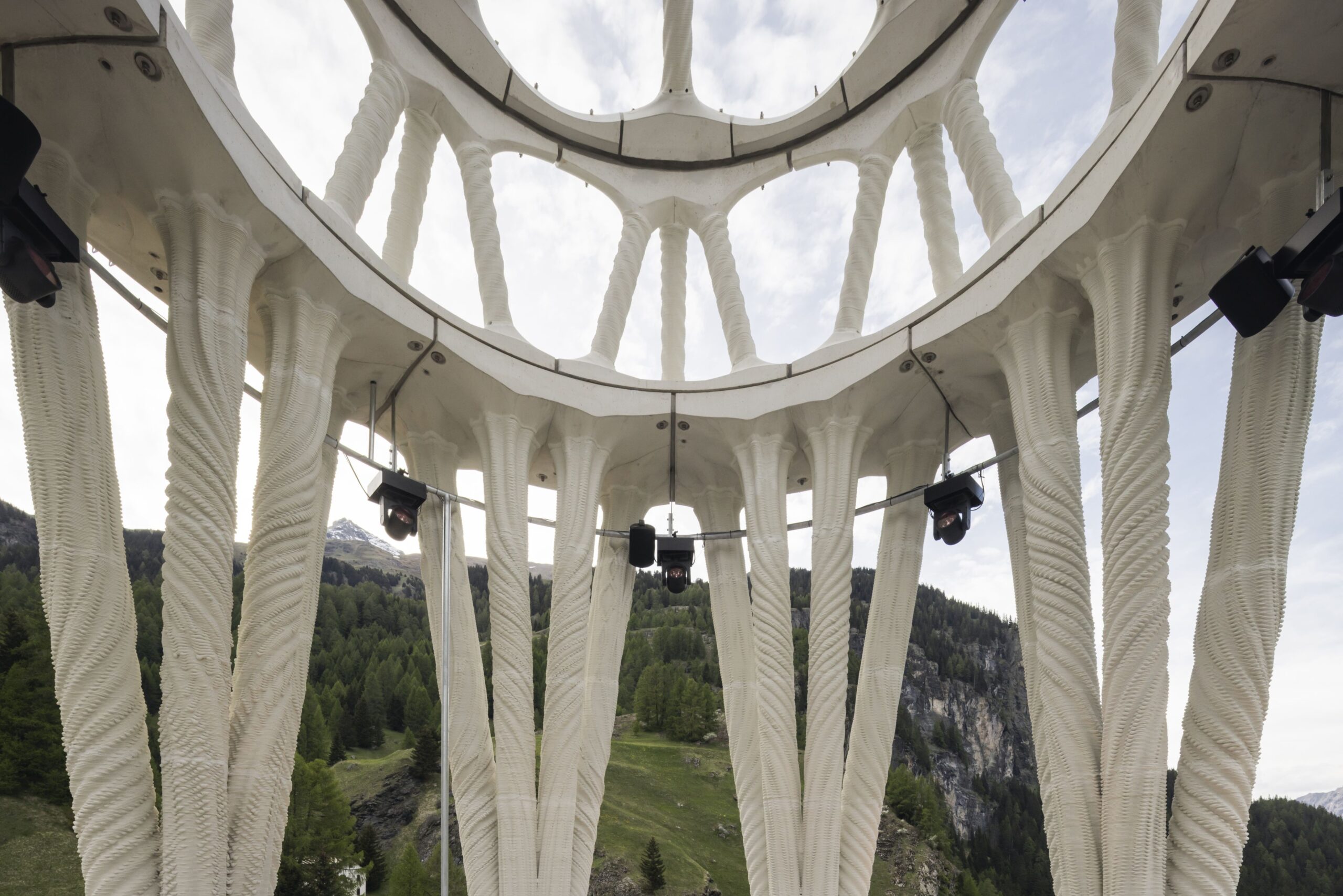
The design was inspired by local confectionery: an ornate layered cake unique to the region. It also references Baroque builders in Switzerland’s Grisons region.
Giovanni Netzer, founder of the Origen cultural foundation, said: “I was fascinated by the interplay between digital design, traditional craftsmanship, cultural memory and artistic form.
“The White Tower is more than a technical triumph — it inspires the building sector, encourages sustainable tourism and offers new cultural space. It also gives a fading village a new chance. That’s extraordinary.”
- Subscribe here to get stories about construction around the world in your inbox three times a week
Further Reading:


